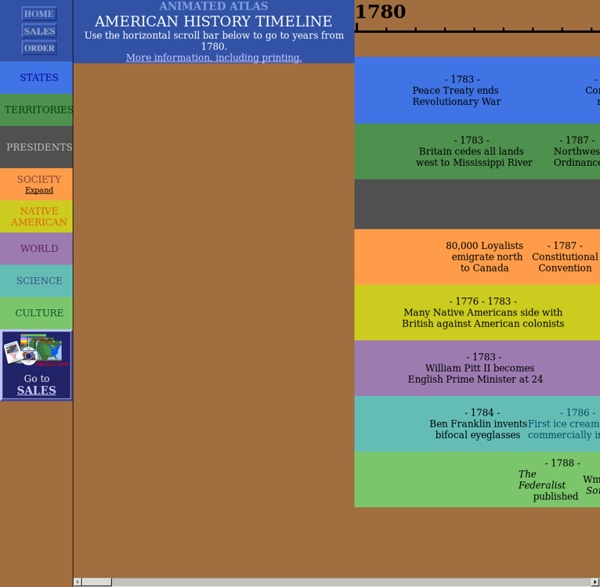



Encyclopedia of Genealogy Archiving Early America The WWW Virtual Library Wikispace USI Students examine the historical and intellectual origins of the United States during the Revolutionary and Constitutional eras. They learn about the important political and economic factors that contributed to the outbreak of the Revolution as well as the consequences of the Revolution, including the writing and key ideas of the U.S. Constitution. Students also study the basic framework of American democracy and the basic concepts of America government such as popular sovereignty, federalism, separation of powers, and individual rights. Students study America’s westward expansion, the establishment of political parties, and economic and social change. Finally, students will learn about the growth of sectional conflict, how sectional conflict led to the Civil War, and the consequences of the Civil War, including Reconstruction. The Political and Intellectual Origins of the American Nation: the Revolution and the Constitution, 1763-1789 A. The Formation and Framework of American Democracy
The Online Books Page: Archives & Indexes General -- Non-English Language -- Specialty There's a vast range of online literature beyond what we index individually on The Online Books Page. Below we list some of the major sources and indexes of free online texts, in all languages, both general and specialized. General These are large, general-purpose collections with substantial English-language listings. Large-scale repositories -- Significant indexes and search aids -- Significant smaller-scale archives Large-scale repositories These are big collections of texts, big enough to act as small library-like collections in their own right. Significant indexes and search aids The sites below primarily provide search engines, indexes or useful link lists for finding online books. Significant smaller-scale archives Everything else we see worth listing that doesn't fit in more specialized categories. Non-English Languages Tyler Chambers's iLoveLanguages site has a comprehensive listing of various language and literature resources.
rpl2: Resources by Subjects UVa Text Collection UVa Text Collection Search the University of Virginia’s collection of thousands of ebooks. Subject: Arts & Humanities–Literature–Online Texts ArmenianHouse.org ArmenianHouse.org A dynamic collection of documents relating to Armenian literature, history, religion, etc. Subject: Arts & Humanities–History–History By Region–Middle Eastern History; Arts And Humanities–Online Texts–Poetry; Arts And Humanities–Online Texts–Legends And Myths eReader Resources – ipl Special Collection eReader Resources – ipl Special Collection A place where you can explore the world of eReaders and eBooks. Subject: Arts & Humanities–Literature–Online Texts; Computers & Internet–Desktop & Electronic Publishing ibiblio ibiblio “Home to one of the largest ‘collections of collections’ on the Internet, ibiblio.org is a conservancy of freely available information, including software, music, literature, art, history, science, politics, and cultural studies.” Fiction: The EServer Collection Kwani? Kwani? Kwani?
Refdesk.com UH - Digital History Liner Transatlantic Crossing Times 1833-1952 Note: Liverpool / New York. Source: data from P.J. Hugill (1993) World Trade since 1431, Baltimore: Johns Hopkins University Press, p.128. The passenger liner era roughly lasted for about 100 years; from the mid 19th century up to the mid 20th century. Introduction. The usage of ships for passengers is now restricted to cruise shipping, ferries and small scale passenger craft on archipelago countries (Indonesia, the Philippines, Greece, the Caribbean) or great river systems in developing countries (Chang Jiang, Huang He, Nile and Amazon).